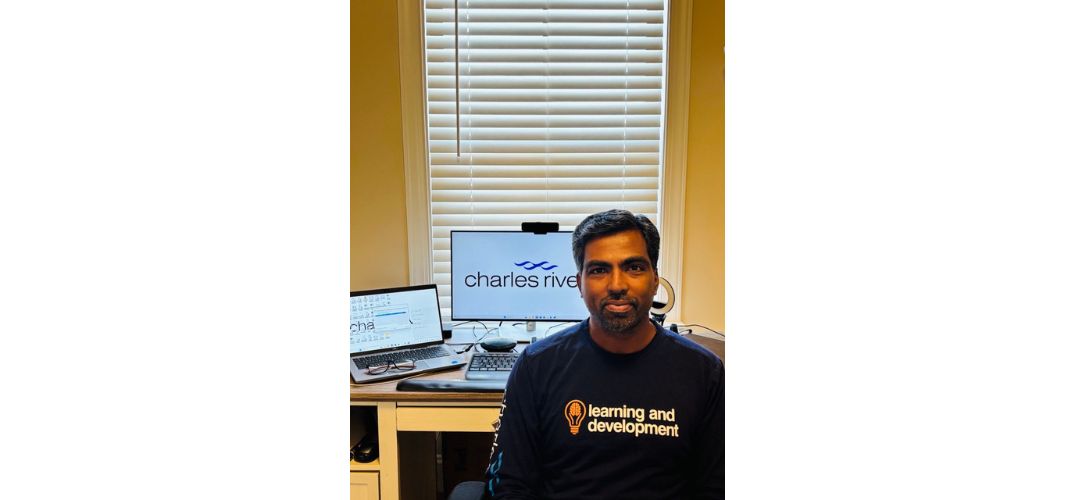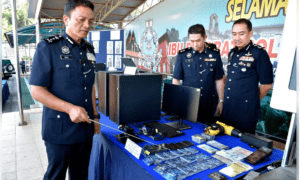Authored by: Ashley Peterson
Education has become a crucial factor for personal success and development in today’s world. Every year, there is an increasing demand for high-quality, affordable training that meets the needs of the job market and provides essential knowledge and skills. Learning Management Systems (LMS) are playing an important role in this process by providing tools to organize and monitor learning.
LMS has now become increasingly important in modern education. These software programs help manage the learning process by allowing users to create and organize courses, track student progress, and interact with students. They are used in a variety of educational settings, from schools to universities. Even many large companies with a developed network of branches use this system. These include Honeywell, Unilever, and many other industry giants. The essence of the system is to give the business owner the opportunity to launch their own online portal for employee training and even implement gamification to make learning more engaging. For example, employees can earn points for completing courses. Agree, this significantly increases motivation to work and develop! They help organizations provide training for their employees and students in a more efficient and effective manner.
The Principal Learning Technology Administrator is a key player in the development and implementation of LMS. One of the leading figures in this field is Murali Penmetsa. He has excelled in this field. Murali holds a Bachelor of Engineering in Electronics & Communications from the University of Madras, which provided him with a strong technical foundation and skills that he successfully applied in the implementation and management of learning management systems. Now he has over 18 years of experience in managing and developing LMS systems and has worked in top companies such as Capgemini America, CSL Seqirus, Luxottica Retail North America, and HCL America Inc. He helps businesses in various industries, whether pharmaceuticals or optical stores, achieve incredible results. And most importantly, this specialist knows how to increase company revenue. Currently, he works as LMS Administrator for the Charles River Laboratory. He is responsible for implementing and maintaining the LMS at company facilities worldwide. Thanks to his extensive experience, Murali ensures the smooth development of LMS systems without any worries, and thousands of people gain access to knowledge simultaneously.
What does this job entail, and what makes it challenging? Murali Penmetsa helps companies efficiently automate key processes aimed at developing and maintaining employees’ professional skills. It helps to improve business performance. These tasks include onboarding new hires, which accelerates their integration into the work process, and providing regular training to ensure continuous improvement. LMS also helps organize training for employees at remote branches, conduct assessments, and support and develop the talent pool. The Principal Learning Technology Administrator’s role is crucial in creating an effective learning environment that meets the needs of students and organizations.
But these are far from all the skills of this specialist. One of his notable achievements was the implementation of new features to ensure compliance with regulatory standards and the creation of robust security protocols, including defining user and administrator roles and implementing data protection measures. These efforts not only streamlined operational processes but also ensured continuous employee training, strengthening the company’s global regulatory compliance.
He effectively merged the records of user training from various legacy systems into a unified global LMS, ensuring data accuracy and significantly improving the system’s usability for Merck & Co., a company that operates in 81 countries and supports 21 locales.
The streamlined platform now processes an average of 165,691 training completions per month globally, effectively enhancing accessibility and consistency in training data across different regions. This initiative enhanced the LMS architecture, enabling better monitoring and reporting capabilities to support the organization’s global training goals.
Key accomplishments included implementing features to ensure compliance with regulatory standards, establishing robust security protocols, such as defining user and administrator roles, and implementing data gatekeeping measures. These initiatives streamlined operations and ensured continuous training. They also strengthened the organization’s global regulatory compliance.
As a consultant for Luxottica Retail North America with 25,000 employees, Murali customized the Learning Management System to improve user engagement and training effectiveness. He designed personalized banners and interactive tiles and created user-specific content that captured organization-specific data. This led to higher adoption of the system by users and increased engagement with training materials.
For the CSL Seqirus with over 40,000 employees, Penmetsa successfully integrated the Enterprise Electronic Data Management System with the Learning Management System. This integration streamlined compliance processes, significantly enhancing operational efficiency. As a result, Murali reduced the time it takes to complete training by 30% and minimized the risk of non-compliance.
Also, Murali successfully implemented a cloud-based LMS from SAP SuccessFactors for Charles River Laboratories with operations in 20 different countries. He ensured that the LMS was fully multilingual and highly user-friendly. This involved creating 17,500 training materials and configuring 4,000 administrative accounts. As a result, over 148,500 trainings were successfully completed within the first year of implementation.
But what makes Murali’s contribution truly unique? He developed detailed instructions and procedures for some of the largest IT teams managing LMS. His two main innovations are improved Standard Operating Procedures (SOPs) and Work Instructions (WIs). These are fundamental elements of quality and efficiency management across industries, ensuring consistency, minimizing the risk of errors, and enhancing productivity. In a company, SOPs and WIs are crucial because they help people perform their tasks correctly, quickly, and without mistakes. Let’s take a closer look at how the systems created by Murali work.
In simple terms, SOPs are detailed descriptions of how to do something right, step by step. They make it easier to standardize processes. SOPs are used in business, science, manufacturing, and other fields where consistency in processes and outcomes is essential.
WIs, on the other hand, are instructions that break down specific small steps within a larger process. They are often used for training new employees or when implementing new processes. They provide clarity and understanding of exactly how the work should be done, helping to reduce the likelihood of mistakes and improving efficiency.
These are indispensable developments because they solve several critical tasks and transform chaos into a unified system. So, the main tasks that these innovative developments solve are:
- Fewer mistakes. Everyone knows what to do and doesn’t have to come up with solutions on the fly.
- Increased efficiency. With instructions in hand, there’s no need to waste time thinking about what needs to be done.
- Consistent results. No matter who performs the task, it will be done with the same level of quality.
- Simplified training. New employees can adapt to their responsibilities faster by following detailed instructions.
Imagine a pharmaceutical company where accuracy and compliance with standards are crucial. A mistake in the system can lead to serious consequences. Murali’s instructions helped companies like Luxottica Retail North America, Charles River Laboratories, and CSL Seqirus not only improve internal processes but also become audit-ready. Previously, each team worked in their own way, leading to inconsistencies and errors. Thanks to Murali’s innovative approach, all teams started working according to unified standards, improving both the quality and speed of their work.
What’s especially important is that Murali didn’t just create generic instructions. He took into account the specific requirements of various industries and integrated his solutions with popular IT tools like ServiceNow and BMC Remedy.
Thanks to his work, the time needed to resolve technical problems was reduced by 20%. His approach helped companies work more efficiently, reduce risks, and ensure compliance with international standards. Murali demonstrated the importance of standardization in the modern IT landscape.
Murali Penmetsa: “Learning Management Systems are a global education solution for the future. I am proud that through my work, education has become more accessible. My systems help reduce employee turnover, teach new skills, and allow employees to communicate with each other. It’s amazing!”
Through his work, Murali contributes to the efficiency and success of companies, helping them strengthen their positions in the market and contribute to the overall growth of the industry. His expertise and dedication make him a valuable asset to any organization.



































